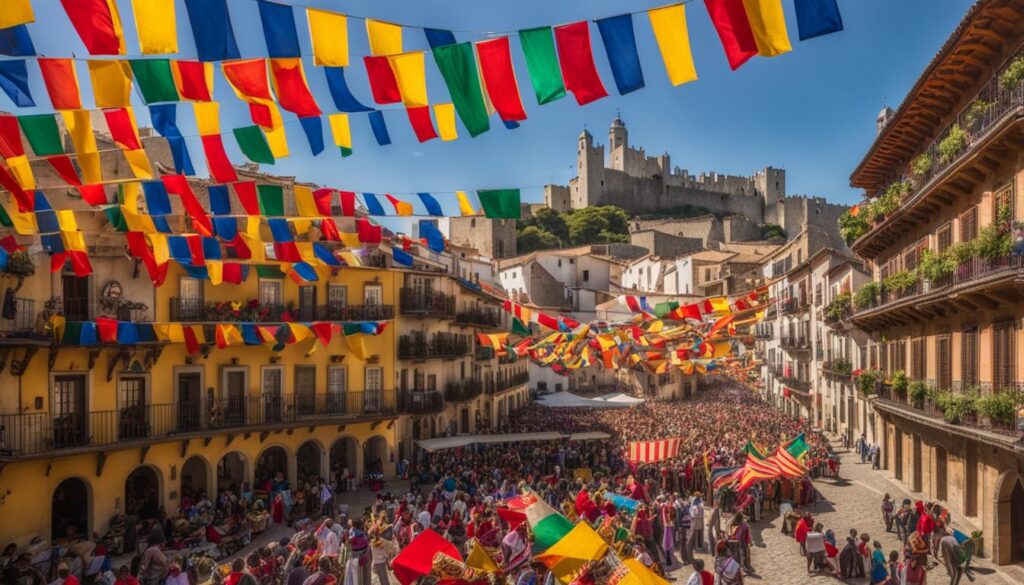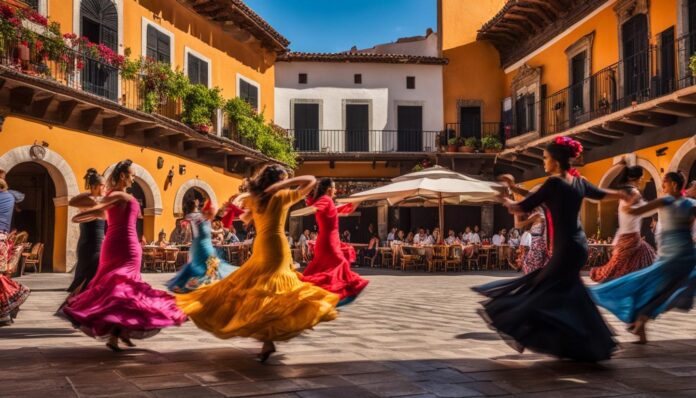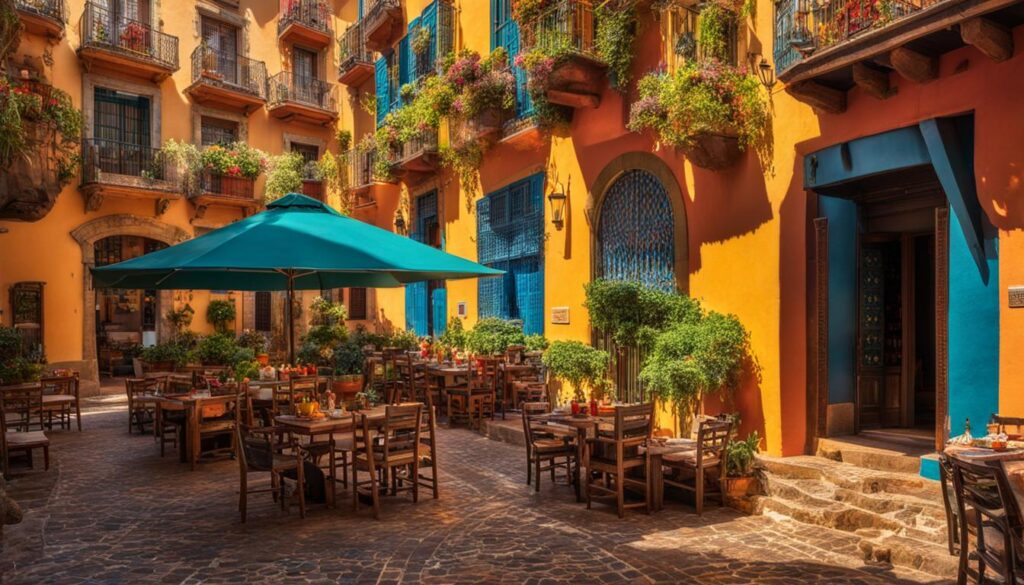If you’re interested in learning about the history and culture of Spain, then you’ve come to the right place. Spain has a rich and diverse cultural heritage that spans thousands of years, from its ancient Celtic and Iberian roots to the present day. This guide is designed to provide beginners with a starting point to explore the vibrant traditions, fascinating history, and unique customs that define Spanish culture. Whether you’re planning a trip to Spain or just want to learn something new, this guide will give you a glimpse into the heart of Spain and its people.
Through this guide, you will gain an understanding of Spanish culture, its language, art, music, cuisine, architecture, and much more. We’ll explore the historical foundations of Spain, from the Roman Empire to the Islamic rule, and the Christian reconquest. We’ll also cover the Golden Age of the Spanish Empire, Spain’s modern era, and iconic traditions and festivals. By the end of this guide, you will have a broad understanding of Spain’s culturally diverse past and present. So let’s dive in and explore Spanish history and culture for beginners.
Understanding Spanish Culture for Beginners
If you’re new to learning Spanish culture, it can be overwhelming to understand where to begin. In this section, we’ll provide you with an introduction to Spanish culture, including its language, art, music, cuisine, and traditional customs. By breaking down the unique characteristics that define Spanish culture, you’ll gain essential insights that will enable you to better understand and appreciate it.
Language: Spanish, also known as Castilian, is the second-most widely spoken language in the world. It’s a Romance language that originated in the Castile region of Spain, and it’s the official language of Spain and Latin America. Spanish is known for its passionate and melodic accent, which can vary depending on the region of Spain you’re in.
| Spanish Dialects | Region |
|---|---|
| Castilian | Madrid and Castile regions of Spain |
| Catalan | Catalonia region of Spain |
| Galician | Galicia region of Spain |
| Basque | Basque Country |
Art: Spain is renowned for its rich artistic heritage, with famous Spanish artists such as Salvador Dali, Pablo Picasso, and Joan Miro. Spanish art is best known for its vibrant colors, intricate patterns, and unique techniques that trace back to the medieval period. The Prado Museum in Madrid is one of the most famous museums in the world that houses Spanish art and historical artifacts.
Music: Spanish music is diverse and reflective of the country’s cultural and regional differences. Flaunting an intense and fiery flair, Spanish music is primarily known for its Flamenco and Classical genres. You can often hear traditional Spanish music played during festivals and celebrations, such as weddings and sporting events.
“Music is the soul of language.” – Max Heindel
Cuisine: Spanish cuisine is a mix of Mediterranean and European flavors and is among the most popular in the world, thanks to the irresistible delicacies such as Paella, Chorizo, Tapas, and Sangria. With fresh ingredients, Spanish cuisine is a perfect blend of simple flavors, making it a favorite among foodies worldwide.
Customs: Spain is commonly known for its iconic customs, including bullfighting, Flamenco dancing, and La Tomatina. These customs date back centuries and are an essential part of the Spanish culture. Bullfighting is a sport that can be found across Spain, while Flamenco dancing is more prominent in the Andalusia region. La Tomatina, where participants engage in a massive tomato fight, happens annually on the last Wednesday of August in the town of Buñol, eastern Spain.
The Historical Foundations of Spain
Understanding the historical foundations of Spain is essential to appreciate its culture and identity. This beginner’s guide to Spanish history and culture explores key periods that shaped the country’s heritage.
The Roman Empire had a significant impact on Spain, which was known as Hispania at that time. The Romans founded cities, built roads, and introduced Latin, which became the basis for the Spanish language. The Visigothic Kingdom followed, bringing a blend of Roman and Germanic influences to the region.
Islamic rule became a dominant force during the 8th-15th centuries. Muslims brought their customs, art, and architecture, making a lasting impact on the region that is still visible today. This period of history is characterized by a rich mix of Muslim, Christian, and Jewish communities.
The Spanish Inquisition was a dark chapter in the country’s history, when thousands were persecuted and killed for their religious beliefs. This turbulent period also saw the rise of the Spanish Empire, marked by extensive exploration, colonization, and influence across the world.
| Historical Period | Main Characteristics |
|---|---|
| Roman Empire | Founded cities, introduced Latin language |
| Visigothic Kingdom | A blend of Roman and Germanic influences, establishment of Albaida |
| Islamic rule | Influenced customs, art, and architecture |
| Spanish Inquisition | Period of religious persecution, rise of the Spanish Empire |
Discovering the historical foundations of Spain will provide you with a deeper understanding of the country’s culture and the complex interplay of different influences that shaped it.
Medieval Spain and the Reconquista
To understand Spanish history and civilization, it’s important to delve into the medieval period. This era in Spain’s past saw the rise of the Christian reconquest known as the Reconquista. The Reconquista was a centuries-long struggle for control of the Iberian Peninsula, culminating in the eventual defeat of Islamic rule and the emergence of diverse cultural practices across Spain.
During this time, Catholicism became a dominant force in Spanish culture, with Christianity serving as a unifying factor in the fight against Islamic rule. However, despite the prevalence of Catholicism, Christian, Jewish, and Muslim communities coexisted in Spain, shaping the country’s unique cultural heritage.
The influence of Islamic rule is seen today in various areas of Spanish civilization, including language, art, and architecture. For example, the Alhambra, a fortress and palace complex in Granada, is a prime example of Islamic architecture in Spain.
The Reconquista also saw the rise of chivalry and other knightly practices, which had a significant impact on Spanish culture and society. These traditions served as models for courtly behavior, literature, and entertainment, contributing to the rich cultural tapestry of Spain.
“The Reconquest was a defining moment in Spanish history, shaping the country’s cultural identity and heritage in countless ways.” – Spanish historian, Isabel Torres
Famous Figures from Medieval Spain
| Name | Career | Contribution |
|---|---|---|
| El Cid | Warrior | Hero of the Reconquista andSymbol of Spanish Chivalry |
| Averroes | Philosopher | Key figure in the Islamic Golden Age of Spain,Famous for his writings |
| Roger de Flor | Mercenary | Leader of the Company of Catalan’s, a band of mercenaries who fought in the Byzantine Empire |
The Reconquista was just one aspect of the medieval period in Spain, but it had a profound impact on the country’s culture and civilization. Understanding this pivotal moment in Spanish history is essential to appreciating the rich tapestry of customs, traditions, and beliefs that define Spanish culture today.
The Golden Age of Spanish Empire
During the 16th century, Spain experienced its Golden Age, a period of tremendous cultural, economic, and military growth that earned the country the status of a global superpower. At the center of this period was the reign of King Philip II, who ascended the throne in 1556 and oversaw major expansion through exploration and colonization.
The Golden Age was also marked by significant contributions to the arts, literature, and science. Figures such as Miguel de Cervantes, who wrote the iconic novel “Don Quixote,” and El Greco, who created stunning masterpieces such as “The Burial of Count Orgaz,” became national treasures and continue to be revered today.
In addition to the impressive cultural accomplishments, Spain’s Golden Age saw the development of an enormous network of trade routes, stretching from the Philippines to the Americas and beyond, enriching the country’s economy and strengthening its standing in the world.
Key Events During the Golden Age of Spanish Empire
| Year | Event |
|---|---|
| 1492 | Christopher Columbus reaches the Americas |
| 1516 | Charles I (Spain), later Charles V (Holy Roman Empire) ascends the throne |
| 1556 | Philip II becomes King of Spain |
| 1588 | The Spanish Armada defeated by England |
| 1605 | Publication of “Don Quixote” by Miguel de Cervantes |
“Spain’s Golden Age was a time of prosperity and achievement, one that left a lasting impact on the world. From art and literature to exploration and colonization, Spain demonstrated its impressive prowess and laid the foundation for many of the cultural traditions we still observe today.” – Anonymous
The Modern Era: Spanish Civil War and Post-Franco Spain
Spain’s modern history has been shaped by significant events such as the Spanish Civil War and the rule of General Francisco Franco. The Spanish Civil War, which began in 1936 and lasted for three years, was a conflict between the Republican government and Nationalist forces led by General Franco. The war had a profound impact on Spanish society and culture, setting the stage for decades of political upheaval and social change.
Following Franco’s victory in the Civil War, he established an authoritarian regime that lasted until his death in 1975. During his rule, there were strict controls on freedom of speech, political opposition, and cultural expression.
Since the death of Franco, Spain has undergone significant social, cultural, and political changes. Spain transitioned to democracy, and the new democratic government introduced a series of reforms that led to the decentralization of power and the recognition of regional autonomy.
Today, Spain is a modern, cosmopolitan country that celebrates its rich cultural heritage. It has become known for its progressive values, vibrant art scene, and bustling cities. Spain’s history is one that has seen many challenges and triumphs, but its past has helped shape its unique culture and identity.
Iconic Spanish Traditions and Festivals
Spain is known for its vibrant and diverse culture, which can be seen through its many festivals and traditions. If you’re looking to gain a better understanding of Spanish culture, exploring these iconic celebrations is a great place to start. Here are just a few of the most well-known Spanish traditions and festivals:
Flamenco Dancing

Bullfighting
Bullfighting, or “la corrida de toros,” is a controversial tradition that has its roots in Spanish history. While bullfighting has been criticized for its perceived cruelty to animals, it remains an important cultural symbol for many Spaniards. The bullfight is a complex and highly choreographed spectacle that involves a matador and a series of bulls. To its supporters, bullfighting is an art form that exemplifies Spanish bravery and grace.
La Tomatina
La Tomatina is an annual festival that takes place in the Valencian town of Buñol. This unique celebration involves participants throwing overripe tomatoes at each other in the streets, resulting in a massive tomato fight. The origins of La Tomatina are unclear, but it’s been a fixture of Spanish culture since the mid-20th century. Today, thousands of people from all over the world travel to Buñol to participate in this lively and colorful event.
Semana Santa
Semana Santa, or Holy Week, is a religious festival that takes place in the lead-up to Easter. This important holiday is celebrated throughout Spain and is marked by a series of processions and other religious events. The largest and most elaborate Semana Santa celebrations take place in Seville, where participants dress in traditional robes and carry statues of saints through the streets.
Table of Iconic Spanish Traditions and Festivals
| Tradition/Festival | Description |
|---|---|
| Flamenco Dancing | A highly expressive dance form that is a hallmark of traditional Spanish culture, originating in the Andalusia region and featuring intricate footwork and live music. |
| Bullfighting | A controversial but iconic Spanish tradition that involves a matador and a series of bulls in a highly choreographed spectacle of bravery and grace. |
| La Tomatina | An annual festival in Buñol where participants engage in a massive tomato fight, dating back to the mid-20th century and attracting thousands of people from around the world. |
| Semana Santa | A religious festival celebrated throughout Spain in the lead-up to Easter, marked by processions and other events, with the largest and most elaborate celebrations taking place in Seville. |
These are just a few examples of the many iconic traditions and festivals that are part of Spanish culture. Exploring these and other celebrations can provide a deeper understanding of the rich and diverse heritage of Spain.
Famous Spanish Landmarks and Architecture
Spain boasts some of the most renowned architectural wonders in the world, showcasing centuries of rich history and cultural heritage. Whether you’re a history buff, art aficionado, or simply a curious traveler, exploring these famous landmarks is a must-try for any visitor to Spain.
Alhambra
The Alhambra, a UNESCO World Heritage Site, is one of Spain’s most visited landmarks, located in the city of Granada. This stunning palace complex dates back to the 13th century and features a blend of Islamic and Christian architectural styles. Visitors can explore the intricate artwork, ornate carvings, and serene gardens that make the Alhambra a true masterpiece.
Sagrada Familia
Barcelona’s Sagrada Familia is an incredibly unique church and a breathtaking architectural feat, designed by renowned Catalan architect Antoni Gaudi. The construction began in 1882, and it is expected to be completed in 2026. Its unique and impressive features will leave you speechless.
Prado Museum
Art enthusiasts won’t want to miss visiting the Prado Museum in Madrid, which boasts one of the world’s most significant collections of European art, featuring works from the 12th to the 20th centuries. The stunning Gothic building also makes for a great visual backdrop.
Guggenheim Museum Bilbao
The Guggenheim Museum Bilbao, located in the Basque Country, is a groundbreaking example of modern architecture. Designed by famed architect Frank Gehry, this structure features a unique, titanium-clad exterior and a contemporary interior. Visitors can see exhibitions from contemporary artists, enjoy picturesque views, and take a memorable photo.
The Spanish landmarks have their very own unique stories to tell, stand as monuments and testament to the country’s rich culture and history. Each continues to amaze travelers who flock to see them every year.
Conclusion
In conclusion, learning about Spanish history and culture is a fascinating journey that can enrich your understanding of the world. By exploring the historical foundations of Spain, its medieval period, and the Golden Age of its empire, you can gain an appreciation for the country’s remarkable contributions to art, literature, exploration, and colonization. You can also discover the diverse traditions and customs that define Spanish culture, from its iconic festivals and traditions to its famous landmarks and architectural marvels.
As a beginner, this guide has provided you with a starting point to explore Spanish history and culture. By delving deeper into its rich heritage and vibrant traditions, you can expand your knowledge and appreciation for this fascinating country and its people. Whether you plan to visit Spain or simply want to learn more about its culture, the insights gained from this guide will serve you well.
So, go ahead and immerse yourself in the world of Spanish history and culture. You won’t regret it!














































